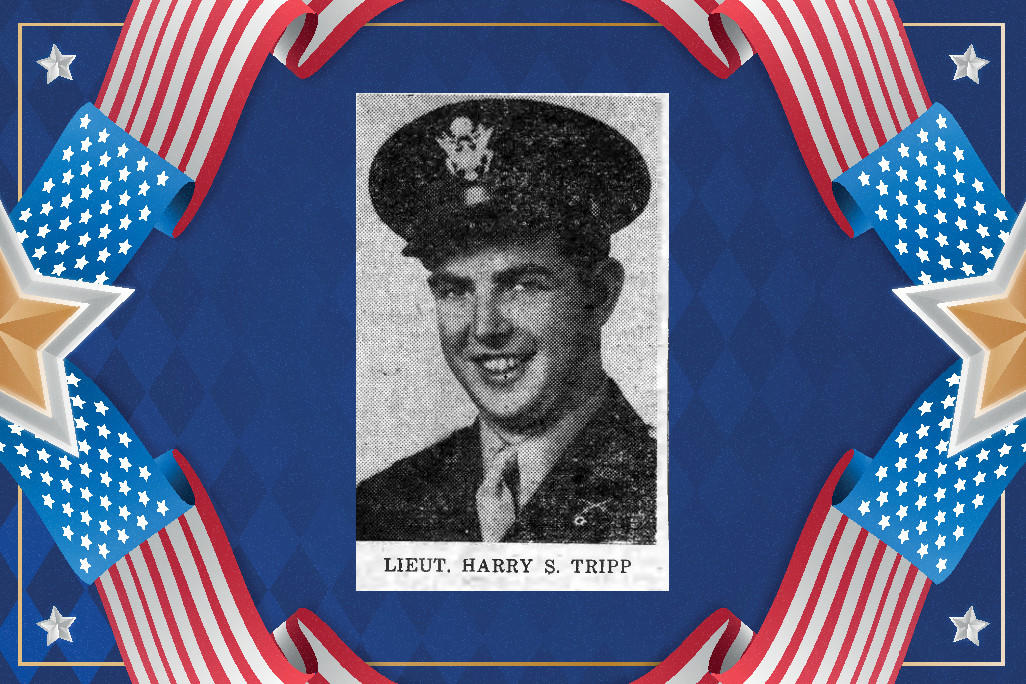By Deborah Larsen

Harry S. Tripp
Harry S. Tripp was born in Rochester, Michigan, on March 22, 1918, the son of Harry and Fael Springsted Tripp. Harry attended Rochester schools and entered the Michigan National Guard in October 1940. He was part of the 125th Regiment, 32nd Division, assigned to coastal defense work on the West Coast of the United States.
After the U.S. entered World War II, Harry applied for officer candidate school and was commissioned as a second lieutenant in August 1942. He was assigned to the 16th Infantry Regiment of the 1st Division and was sent overseas to Europe in May 1944. Harry was wounded in the shoulder at Normandy on July 6, 1944, and received the Purple Heart.
On November 16, 1944, Harry was with his unit fighting in the infamous Hürtgen Forest. The 16th Infantry was part of the Allied force attempting to breach Germany’s Siegfried Line defenses. In six months of fighting in the forest, Allied forces lost nearly 30,000 men. On November 16, in heavy combat near Hamich, Germany, Harry Tripp of Rochester became one of those losses. He was 26 years old.
Harry S. Tripp was laid to rest in the Henri-Chapelle American Cemetery at Liège, Belgium. A cenotaph in Mount Avon Cemetery in Rochester, Michigan, also memorializes him.
